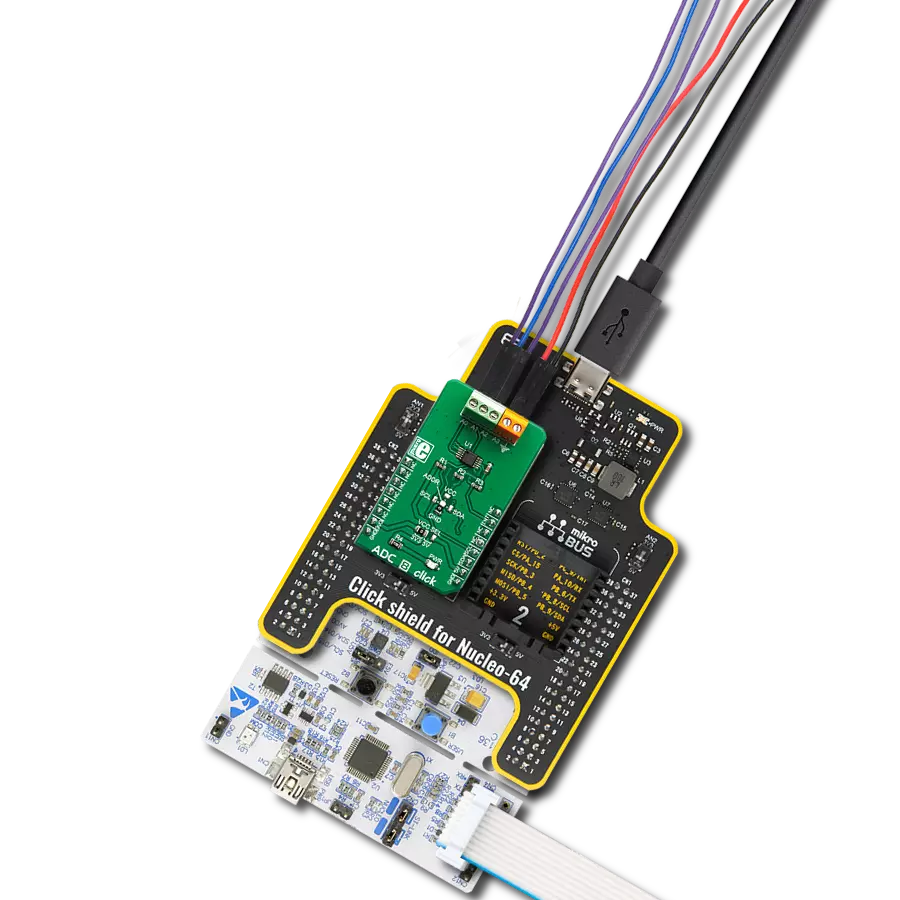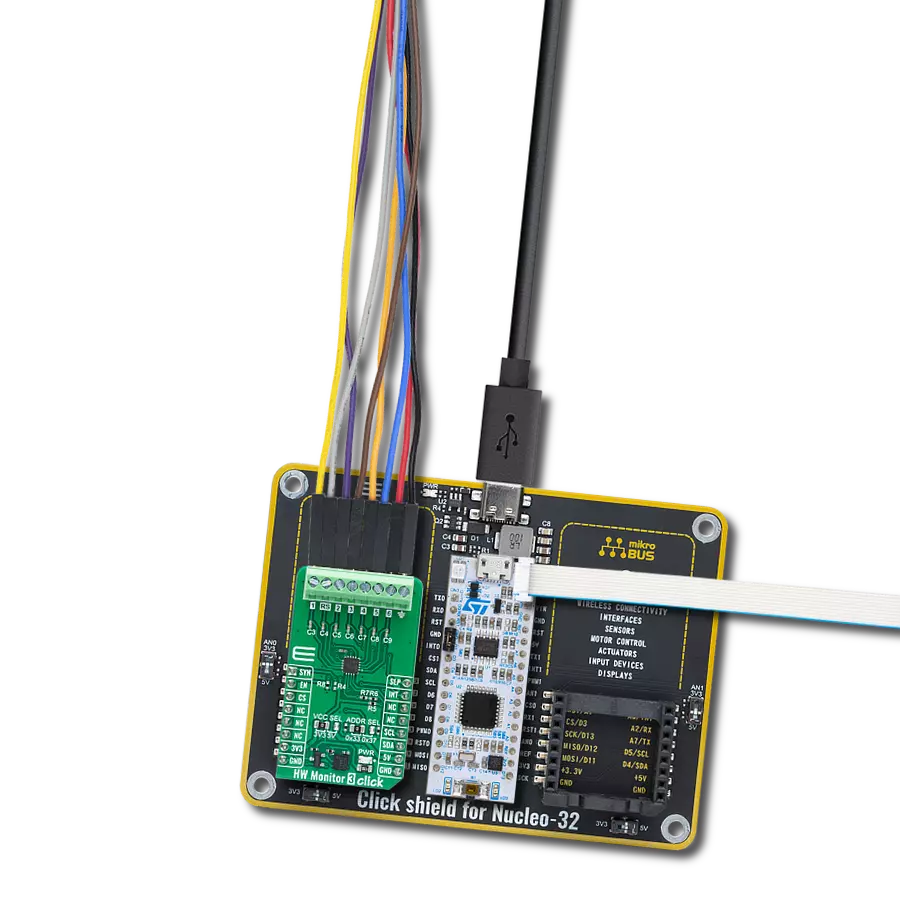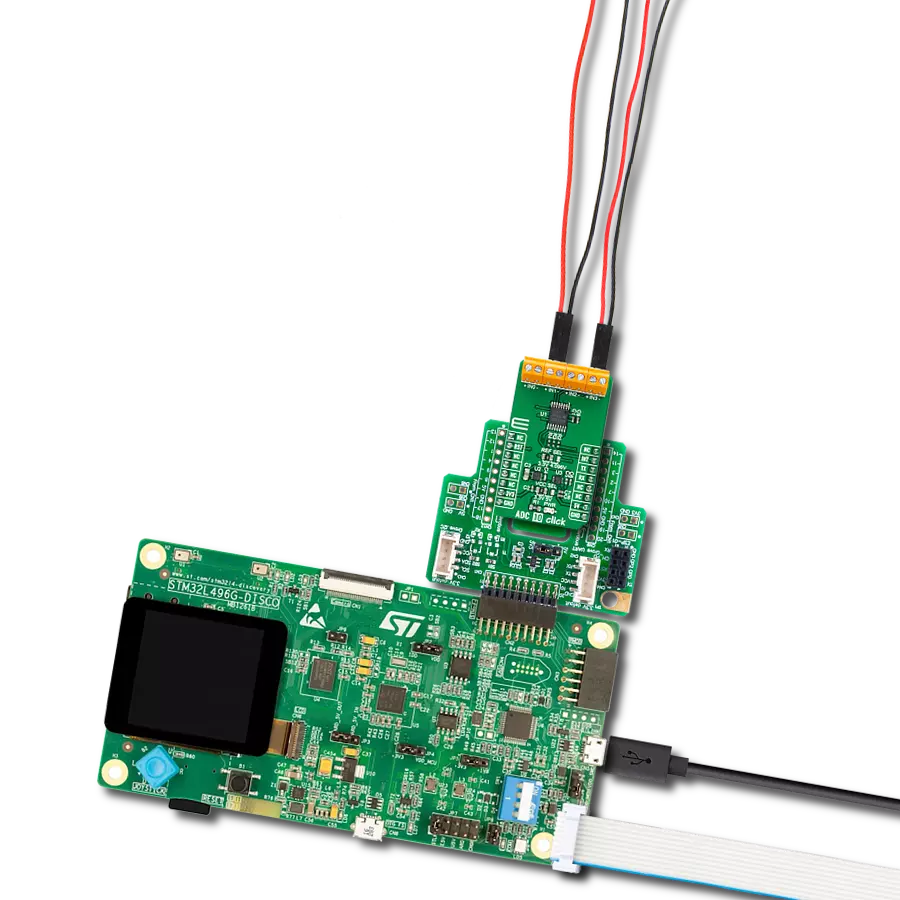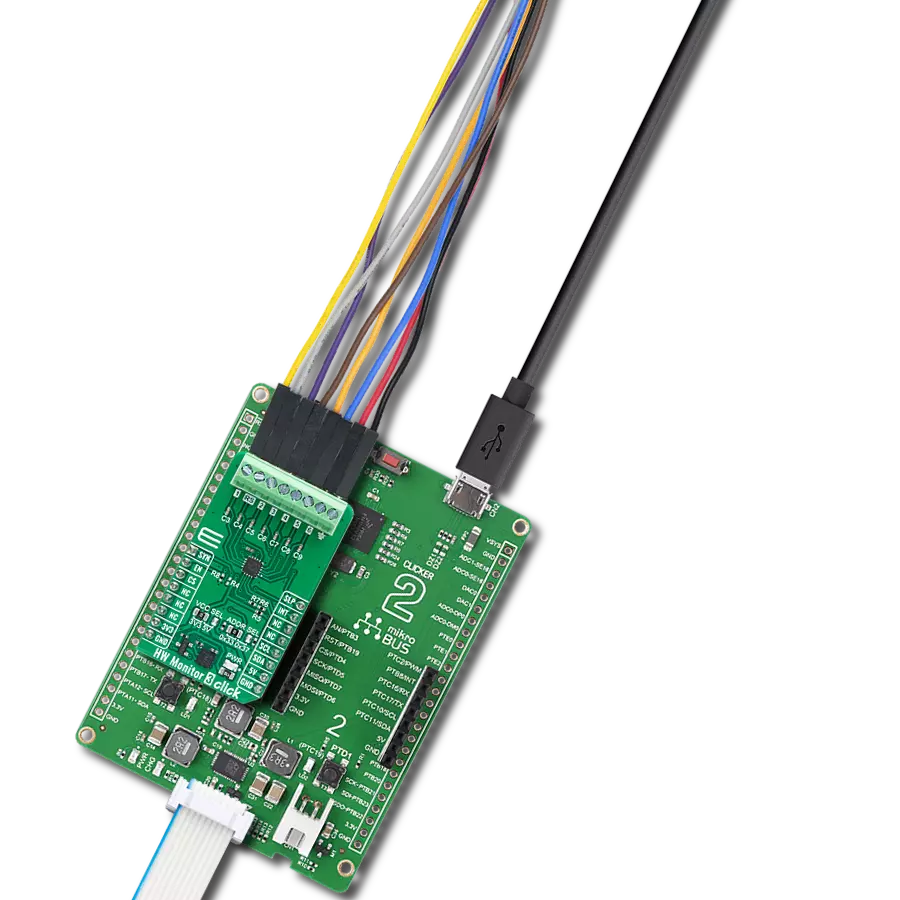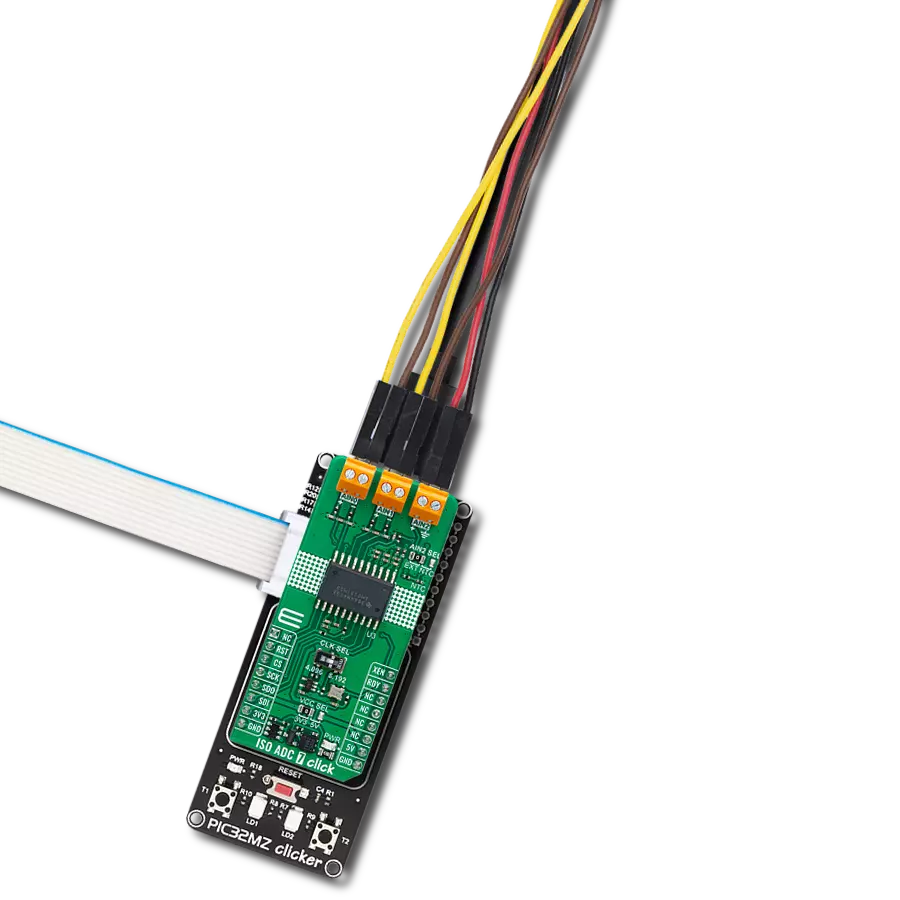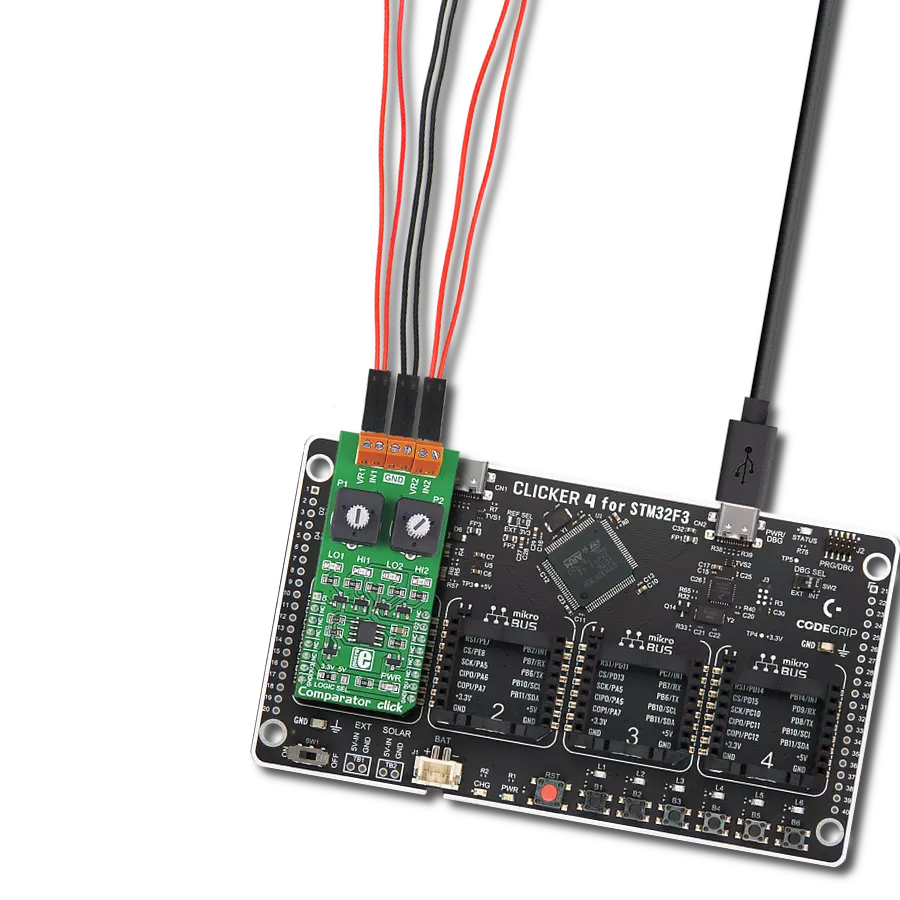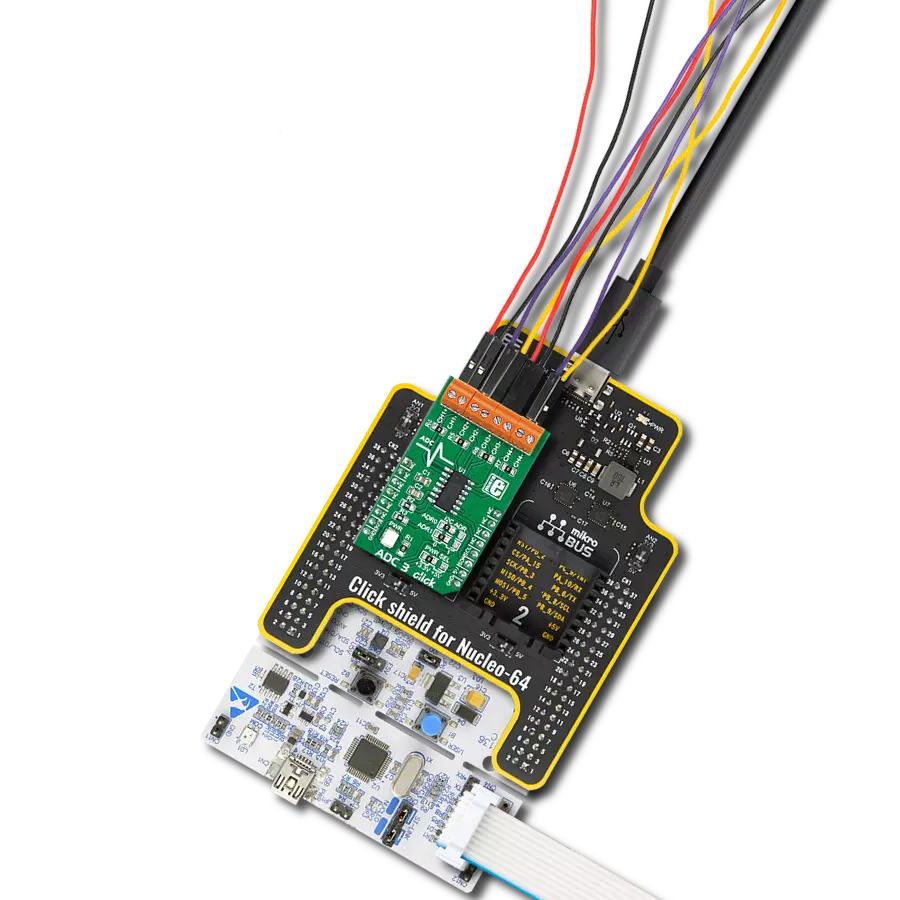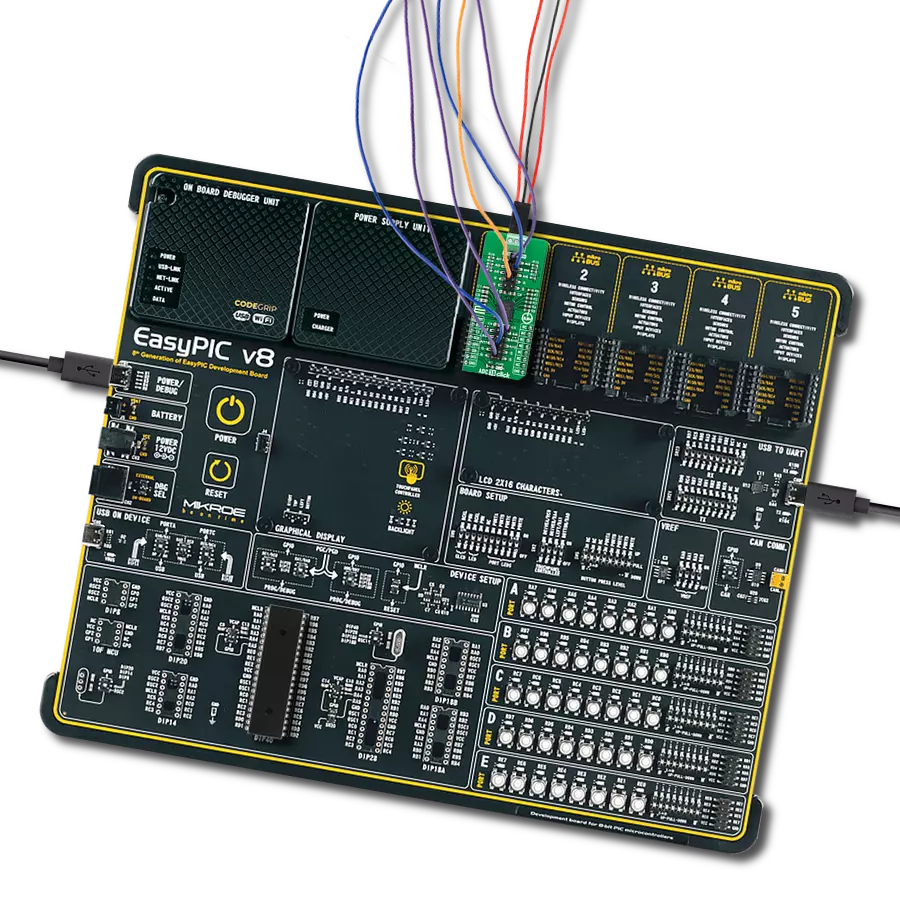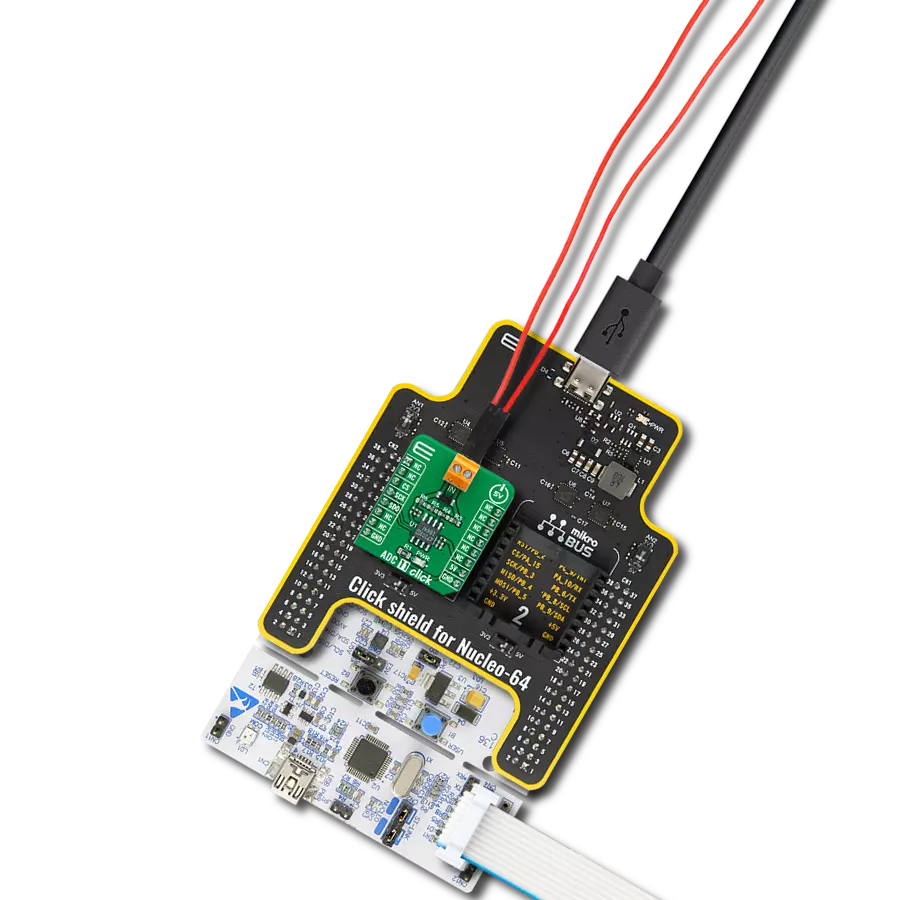Boost performance and protect your system with our high-quality isolated A/D converter
A
A
Hardware Overview
How does it work?
ISO ADC 3 Click is based on the AMC1100, a precision isolation amplifier from Texas Instruments with an output separated from the input circuitry by a silicon dioxide barrier highly resistant to magnetic interference. The AMC1100 can be used in conjunction with isolated power supplies to prevent noise currents on a high common-mode voltage line from entering the local ground and interfering with or damaging sensitive circuitry. It offers features such as linearity, high input common-mode rejection, and low DC errors and drift, which makes it a high-performance isolation amplifier for industrial applications where users and subsystems must be protected from high voltage potentials. The AMC1100 consists of a delta-sigma modulator input stage, including an internal reference and clock generator. The modulator and clock signal output are differentially transmitted over the integrated capacitive isolation barrier that separates
the high-voltage and low-voltage domains. The silicon dioxide capacitive isolation barrier supports a high level of magnetic field immunity. These isolators transfer data signals differentially across the isolation barrier through two capacitors formed with a top metal plate and conductive silicon bottom plate on each side of a silicon dioxide dielectric. The received bitstream and clock signals are synchronized and processed by a third-order analog filter with a nominal gain of 8 on the low side and presented as a differential output. An analog signal from the AMC1100 can be applied directly to the MCP3221, a successive approximation A/D converter with a 12-bit resolution from Microchip, which ISO ADC 3 Click uses to communicate with MCU through a 2-wire I2C compatible interface. This device provides one single-ended input with low power consumption. Data can be transferred at 100kbit/s in the Standard and 400kbit/s in the Fast Mode.
Also, maximum sample rates of 22.3kSPS with the MCP3221 are possible in a Continuous-Conversion Mode with a clock rate of 400 kHz. It also possesses two input terminals labeled VIN and VEXT. VEXT represents the high-side power supply of the amplifier, while the other represents the noninverting analog input of the AMC1100. Both input terminals allow Normal operation with values of applied input voltage up to 5.5V maximum. This Click board™ can operate with either 3.3V or 5V logic voltage levels selected via the VCC SEL jumper. This way, both 3.3V and 5V capable MCUs can use the communication lines properly. However, the Click board™ comes equipped with a library containing easy-to-use functions and an example code that can be used, as a reference, for further development.
Features overview
Development board
EasyPIC v7 is the seventh generation of PIC development boards specially designed to develop embedded applications rapidly. It supports a wide range of 8-bit PIC microcontrollers from Microchip and has a broad set of unique functions, such as a powerful onboard mikroProg programmer and In-Circuit debugger over USB-B. The development board is well organized and designed so that the end-user has all the necessary elements in one place, such as switches, buttons, indicators, connectors, and others. With four different connectors for each port, EasyPIC v7 allows you to connect accessory boards, sensors, and custom electronics more efficiently than ever. Each part of
the EasyPIC v7 development board contains the components necessary for the most efficient operation of the same board. An integrated mikroProg, a fast USB 2.0 programmer with mikroICD hardware In-Circuit Debugger, offers many valuable programming/debugging options and seamless integration with the Mikroe software environment. Besides it also includes a clean and regulated power supply block for the development board. It can use various external power sources, including an external 12V power supply, 7-23V AC or 9-32V DC via DC connector/screw terminals, and a power source via the USB Type-B (USB-B) connector. Communication options such as
USB-UART and RS-232 are also included, alongside the well-established mikroBUS™ standard, three display options (7-segment, graphical, and character-based LCD), and several different DIP sockets. These sockets cover a wide range of 8-bit PIC MCUs, from PIC10F, PIC12F, PIC16F, PIC16Enh, PIC18F, PIC18FJ, and PIC18FK families. EasyPIC v7 is an integral part of the Mikroe ecosystem for rapid development. Natively supported by Mikroe software tools, it covers many aspects of prototyping and development thanks to a considerable number of different Click boards™ (over a thousand boards), the number of which is growing every day.
Microcontroller Overview
MCU Card / MCU
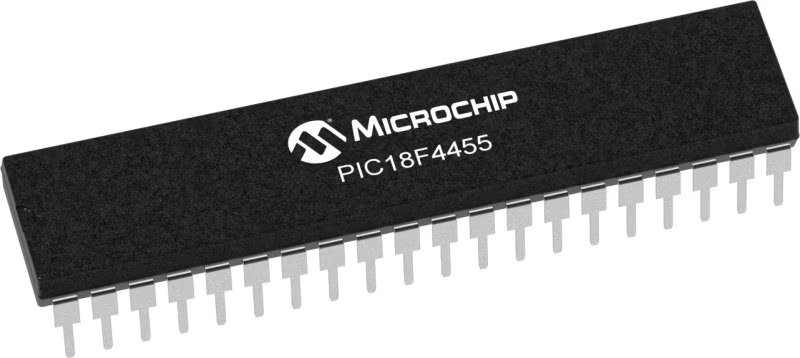
Architecture
PIC
MCU Memory (KB)
24
Silicon Vendor
Microchip
Pin count
40
RAM (Bytes)
2048
Used MCU Pins
mikroBUS™ mapper
Take a closer look
Click board™ Schematic

Step by step
Project assembly
Track your results in real time
Application Output
1. Application Output - In Debug mode, the 'Application Output' window enables real-time data monitoring, offering direct insight into execution results. Ensure proper data display by configuring the environment correctly using the provided tutorial.

2. UART Terminal - Use the UART Terminal to monitor data transmission via a USB to UART converter, allowing direct communication between the Click board™ and your development system. Configure the baud rate and other serial settings according to your project's requirements to ensure proper functionality. For step-by-step setup instructions, refer to the provided tutorial.

3. Plot Output - The Plot feature offers a powerful way to visualize real-time sensor data, enabling trend analysis, debugging, and comparison of multiple data points. To set it up correctly, follow the provided tutorial, which includes a step-by-step example of using the Plot feature to display Click board™ readings. To use the Plot feature in your code, use the function: plot(*insert_graph_name*, variable_name);. This is a general format, and it is up to the user to replace 'insert_graph_name' with the actual graph name and 'variable_name' with the parameter to be displayed.

Software Support
Library Description
This library contains API for ISO ADC 3 Click driver.
Key functions:
uint16_t isoadc3_read_data ( );- Function is used to read raw data from MCP3221.uint16_t isoadc3_read_voltage ( uint16_t v_ref );- Function is used to calculate the ADC's voltage level.
Open Source
Code example
The complete application code and a ready-to-use project are available through the NECTO Studio Package Manager for direct installation in the NECTO Studio. The application code can also be found on the MIKROE GitHub account.
/*!
* @file main.c
* @brief ISOADC3 Click example
*
* # Description
* This example shows the capabilities of the ISO ADC 3 Click.
*
* The demo application is composed of two sections :
*
* ## Application Init
* Initalizes I2C driver and makes an initial log.
*
* ## Application Task
* Measures ADC voltage level and prints it via USB UART terminal.
* @author Stefan Ilic
*
*/
#include "board.h"
#include "log.h"
#include "isoadc3.h"
static isoadc3_t isoadc3;
static log_t logger;
uint16_t voltage;
void application_init ( void ) {
log_cfg_t log_cfg; /**< Logger config object. */
isoadc3_cfg_t isoadc3_cfg; /**< Click config object. */
/**
* Logger initialization.
* Default baud rate: 115200
* Default log level: LOG_LEVEL_DEBUG
* @note If USB_UART_RX and USB_UART_TX
* are defined as HAL_PIN_NC, you will
* need to define them manually for log to work.
* See @b LOG_MAP_USB_UART macro definition for detailed explanation.
*/
LOG_MAP_USB_UART( log_cfg );
log_init( &logger, &log_cfg );
log_info( &logger, " Application Init " );
// Click initialization.
isoadc3_cfg_setup( &isoadc3_cfg );
ISOADC3_MAP_MIKROBUS( isoadc3_cfg, MIKROBUS_1 );
err_t init_flag = isoadc3_init( &isoadc3, &isoadc3_cfg );
if ( I2C_MASTER_ERROR == init_flag ) {
log_error( &logger, " Application Init Error. " );
log_info( &logger, " Please, run program again... " );
for ( ; ; );
}
log_info( &logger, " Application Task " );
}
void application_task ( void ) {
voltage = isoadc3_read_voltage( &isoadc3, ISOADC3_VREF_3V3 );
log_printf( &logger, " ADC voltage Level: %d mV \r\n", voltage );
log_printf( &logger, "------------------------\r\n" );
Delay_ms ( 1000 );
}
int main ( void )
{
/* Do not remove this line or clock might not be set correctly. */
#ifdef PREINIT_SUPPORTED
preinit();
#endif
application_init( );
for ( ; ; )
{
application_task( );
}
return 0;
}
// ------------------------------------------------------------------------ END




















